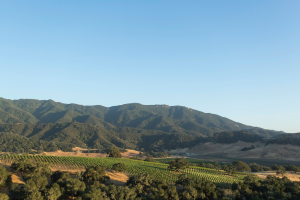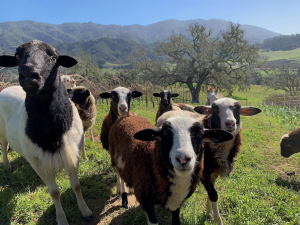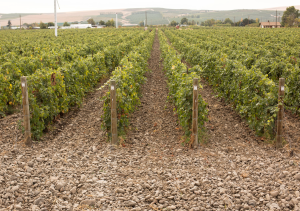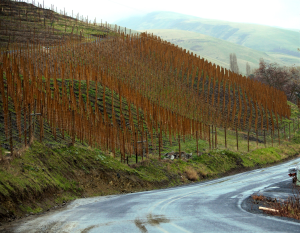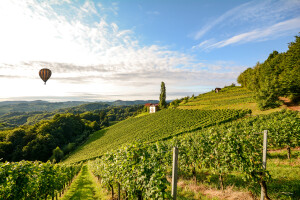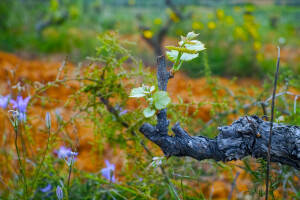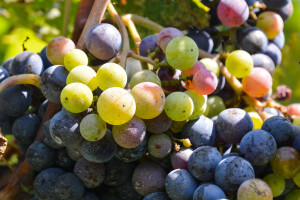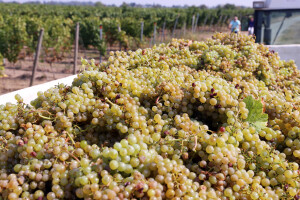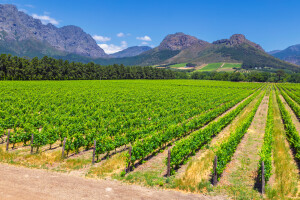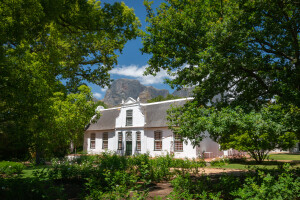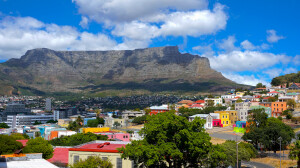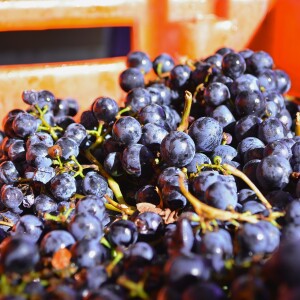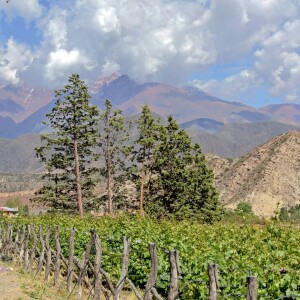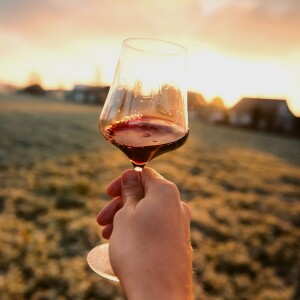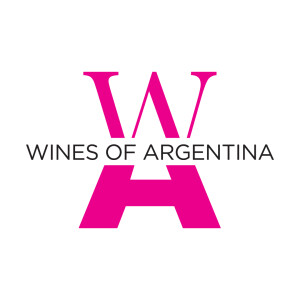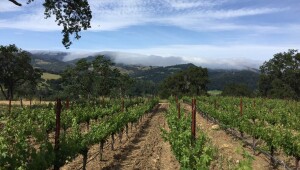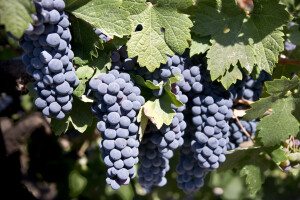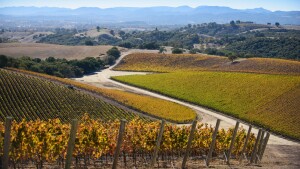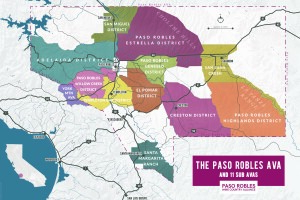Today we have a guest post from Sam Schmitt, CWE, CS. Sam—one of our favorite speakers and well-known to SWE conference attendees—is currently serving as the General Manager at Folded Hills Winery in California’s Santa Ynez Valley. Sam gives us a preview of his upcoming presentation, “Warm and Cool Climate Influence on Rhône varietals in the New World — An Upside Down Comparison.” Trey Busch, co-owner and winemaker at Sleight of Hand Cellars in Washington State’s Walla Walla Valley AVA will be Sam’s co-presenter (more on this later). This session will be presented at the 46th Annual Conference of the Society of Wine Educators. The conference is scheduled for August 10-11 in Coachella Valley (Indian Wells, CA).
It is widely accepted in the northern hemisphere that cool wine growing climates are found in higher latitudes approaching 50º N, and warmer wine growing climates are found in lower latitudes approaching 30º N. After all, 50º N is more than halfway from the equator to the North Pole. But intuition is confounded by the natural landscape along the North American Pacific Coast where the subduction of the Pacific Plate under the North American Plate has created some of the finest wine growing climates in the world, albeit somewhat upside down!
California’s Central Coast extends along the corridor between the Pacific Ocean and the hillsides and valleys of the Coast Range Mountains between Santa Cruz, just south of San Francisco down to Santa Barbara County, just west of Los Angeles. Along this roughly 100 mile stretch of territory, topography and cold Pacific Ocean influences produce continuously-changing local climates. The cold Monterrey Peninsula evolves to warm, almost hot, midway in Paso Robles, then turns cool again just a few miles south in San Luis Obispo until you reach the Santa Ynez Valley, at the Central Coast’s southernmost point. Here, in the span of 15 miles from the Pacific Ocean eastward, we have examples virtually every growing climate present in France, all within a single AVA.
Santa Ynez Valley (SYV) is Folded Hill’s home AVA. SYV is unique among the world’s wine growing regions due to its location in California where the Pacific Ocean borders the region on both the West and the South. Tectonic influences in this area have created a rare transverse series of mountain ranges with their valleys predominantly open to the west out to the Pacific Ocean. Moving inland, average daily temperatures rise approximately 1ºF for every mile you move east of the shoreline. For this reason, Santa Ynez Valley AVA has given rise to several nested AVAs from West to East each with distinct terroir personalities —the cool Sta. Rita Hills AVA to the west, the warm Ballard Canyon AVA and Los Olivos District AVA in the mid-section, and the very-warm-to-hot in Happy Canyon AVA to the East.
Thanks to the pop culture phenomenon of the 2004 movie “Sideways,” most people know Santa Ynez Valley as an epicenter for Pinot Noir and Chardonnay, which is expressed most impressively in the Sta. Rita Hills. Sta. Rita Hills takes the first full brunt of the cold Pacific Ocean breezes and frequent marine layer cloud cover because the valley opens directly to the sea. As you travel inland, you quickly discover that Santa Ynez Valley is home to a cornucopia of celebrated grape varieties including Cabernet Sauvignon, Sauvignon Blanc, Riesling, Sangiovese, Vermentino, Tempranillo, and virtually the entire catalog of Rhône varietals, especially Syrah and Grenache.
Folded Hill’s Winery, established by Andrew Busch, Great Grandson of Annheuser-Busch founder Adolphus Busch, has the distinction of being the southernmost vineyard in the Santa Ynez Valley AVA, sitting just inside the AVA perimeter along the base of the Santa Ynez Mountain range. It is also one of a handful of vineyards in SYV that is more significantly influenced by the Pacific Ocean from the south rather than the west — in fact, it is the closest vineyard to the Pacific Ocean in all of SYV, just four miles away from the shoreline. This location creates a very uncommon terroir and microclimate that turns out to be ideal for growing Rhône varietals — in an uncharacteristic otherwise cool climate.
In fact, although the vineyard is located at 34º 32’ N, its Regional Winkler Classification is 1b, in the company of Burgundy and the Willamette Valley. Common wisdom suggests that region 1b—with average daily temperatures well below 62ºF—would be far too cold to reliably ripen Syrah and Grenache year after year. But Folded Hills’ location within SYV’s unusual terrain allows it to perform more like a mid-region II location—more like the Northern Rhône—by virtue of a growing season that starts in mid-March most years and extends into early November with a daily average temperature between 63ºF and 64ºF before fall/winter precipitation becomes a threat. Additionally, we experience relatively low temperature variation between winter and summer and wide diurnal ranges consistently spanning 35ºF to 40ºF throughout the growing season.
The other half of this story is Sleight of Hand Cellars, founded by Trey Busch, Great-Great Grandson of Adolphus Busch’s brother, Ulrich — however, Andy and Trey just discovered they were distant cousins this past winter! Sleight of Hand Cellars is located in Washington State’s Walla Walla Valley AVA—in the Southeast corner of the greater Columbia Valley AVA—and also produces exceptional Rhône varietal wines, but in a very different climate.
Walla Walla Valley, like much of the greater Columbia Valley is greatly influenced by the rain shadow created by the Cascade Mountain range separating eastern Washington from the Pacific Ocean. This magnitude of the Cascade Mountain rain shadow has given rise to an unusually dry, almost hot, arid desert over most of the Columbia Valley. Like Folded Hills, Sleight of Hand’s Regional Winkler Classification is a counter-intuitive Region II (almost region III) despite it’s vineyards being between 46º 01’ N and 46º 18’ N latitude — roughly the same as Mâcon in Burgundy, which just as far inland from the French Atlantic coast as Walla Walla is from the Pacific Coast in Washington—but Mâcon is rated as a cool 1b Region. However, similar to Burgundy, Walla Walla’s climate behaves more Continental with sharper temperature changes between seasons and much hotter mid-summer month high temperatures. A key difference is that Walla Walla does not experience the precipitation and extreme weather of a fully Continental climate, which ultimately classifies it as hot-Mediterranean due to its long dry summers and mild winters. In addition, the average growing season day in Walla Walla boasts more than 2 hours of additional sunlight than Santa Ynez Valley. These extended daylight hours have an equally significant, favorable impact on the phenolic profile at harvest which are remarkably different than similar warm/hot New World regions that feature Rhône varietals such as Paso Robles, CA and Barossa Valley, Australia, both of which are closer to 34ºN and S respectively and have fewer sunlight hours daily than Walla Walla throughout the growing season.
In Rhône varieties—Syrah in particular—these (upside down) terroir influences have a profound impact on their expression in our respective wines. The exceptionally long, relatively even growing season at Folded Hills yields fruit at full phenolic ripeness with bright, almost vibrant, acidity, fine grained textural tannins, complex red-black fruit and baking spice driven flavors, delicate almost floral aromas, with medium body and jewel-toned colors developed over a slow, even growing cycle. The warmer, but longer daylight growing season at Sleight of Hand yields fruit at full phenolic ripeness with lively acidity, soft, supple ripe tannins, rich dark fruit and black spice flavors, pronounced complex aromas, and medium+ to full bodied wines with classic inky-deep color. Both very different, yet varietally correct for their local climactic influences — albeit “upside down” in the New World.
At the August 2022 Annual Conference, I will further discuss and illustrate the unusual natural landscape that influences Folded Hills’ vineyard site and wines in California’s Santa Ynez Valley AVA and Trey Busch, co-owner and winemaker at Sleight of Hand Cellars in Washington State’s Walla Walla Valley AVA will present the terrain and climactic influences of their vineyard sites in Walla Walla and Yakima Valley as we share a side-by-side comparative tasting of our Grenache and Syrah wines. The presentation is scheduled for Wednesday, August 10th at 3:00 pm. See you there!
